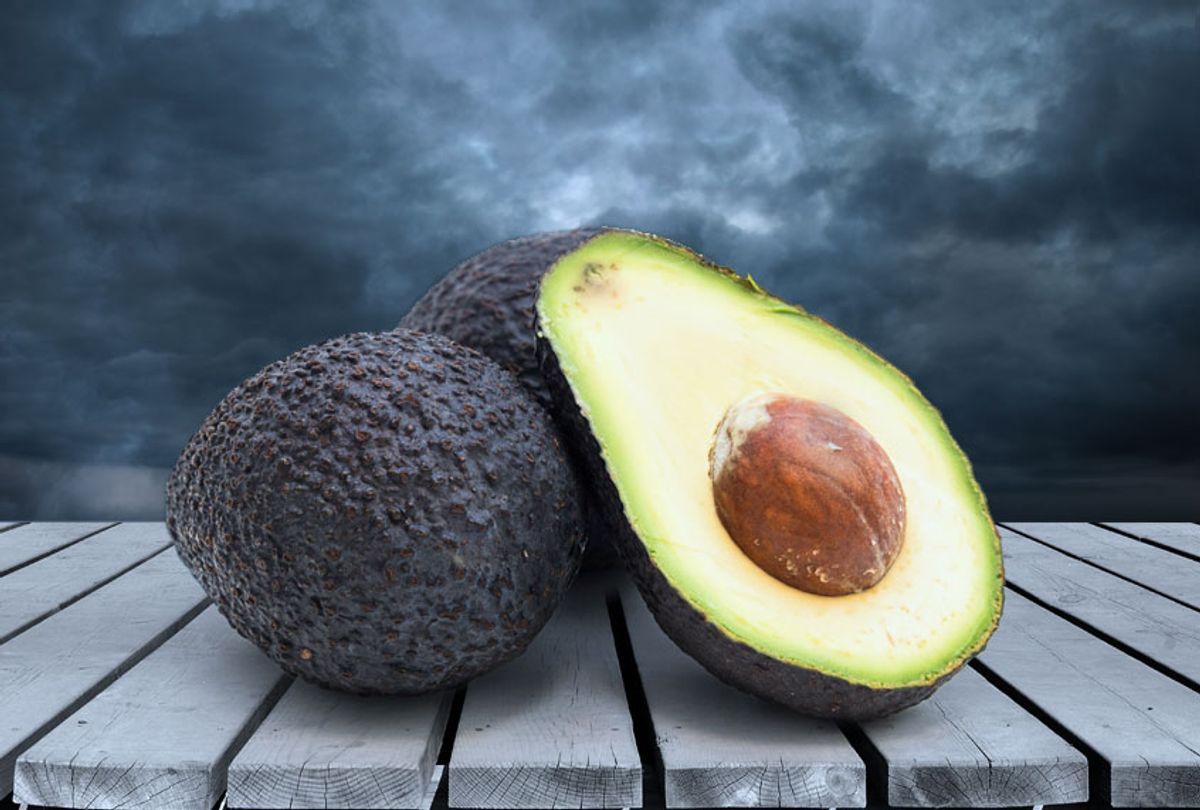Thanks to genome sequencing, scientists now know the genetic code of the Hass avocado, one of the most beloved varieties and a major global agricultural commodity.
Researchers at the National Laboratory of Genomics for Biodiversity (LANGEBIO) in Mexico, Texas Tech University, and the University at Buffalo, led the project to sequence the buttery green fruit. The findings were published this month in the Proceedings of the National Academy of Sciences. While this does not mean a 23&Me equivalent will be created for avocados in the future, scientists hope the research will improve the life cycle of the crop, help fight threatening avocado diseases, and optimize growth.
"Although most people will have only tasted Hass or a couple of other types, there are a huge number of great avocado varieties in the species' Mexican center of diversity, but few people will have tried them unless they travel south of the U.S. border,” Luis Herrera-Estrella, Ph.D., President's Distinguished Professor of Plant Genomics at Texas Tech University, said in a statement. “These varieties are genetic resources for avocado's future. We needed to sequence the avocado genome to make the species accessible to modern genomic-assisted breeding efforts.”
Through the sequencing of a Hass avocado’s DNA, researchers learned that the Hass is a mix of 61 percent Mexican avocado and 39 percent Guatemalan avocado genes. Scientists had previously suspected it was a hybrid, though the genetic ratios were unknown.
Avocados are expected to be affected by climate change, which is one reason why understanding the fruit’s DNA is so important.
"Our study sets the stage for understanding disease resistance for all avocados," Victor Albert, Ph.D., Empire Innovation Professor of Biological Sciences in the UB College of Arts and Sciences, and co-leader of the study with Herrera-Estrella, said in a statement. "If you have an interesting tree that looks like it's good at resisting fungus, you can go in and look for genes that are particularly active in this avocado. If you can identify the genes that control resistance, and if you know where they are in the genome, you can try to change their regulation. There's major interest in developing disease-resistant rootstock on which elite cultivars are grafted."
In 2017, the U.S. imported nearly 80 percent of its avocados from Mexico. The industry has experienced rapid growth over the last decade. By understanding the genome of the Hass avocado, researchers can have a better understanding of how to meet demand, too.
"We study the genomic past of avocado to design the future of this strategic crop for Mexico," Herrera-Estrella said. "The long life cycle of avocado makes breeding programs difficult, so genomic tools will make it possible to create faster and more effective breeding programs for the improvement of this increasingly popular fruit."
Despite the DNA sequencing, scientists still don’t know the age of the modern industrial avocado crop. Hass avocados are believed to have first been planted in the 1920s. However, in prehistoric times, avocados in a different form may have been eaten by giant sloths. The paper explains that the avocado experienced two "polyploidy" events in its history, in which the avocado’s entire genome got copied, but these duplicated genes were deleted. Some lived on and developed new functions, though, and can still be found in the avocado today.



Shares